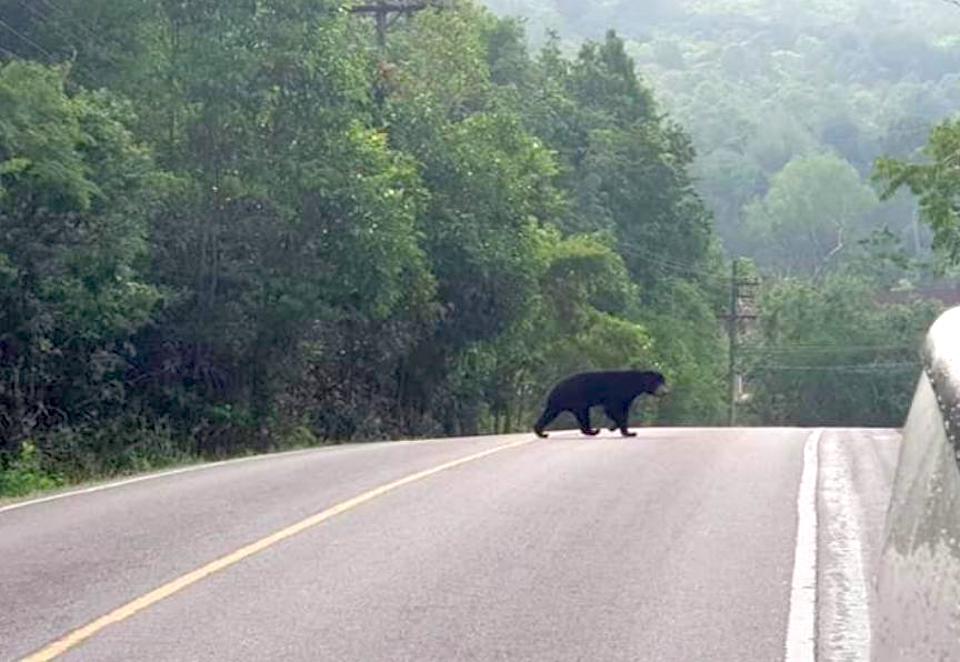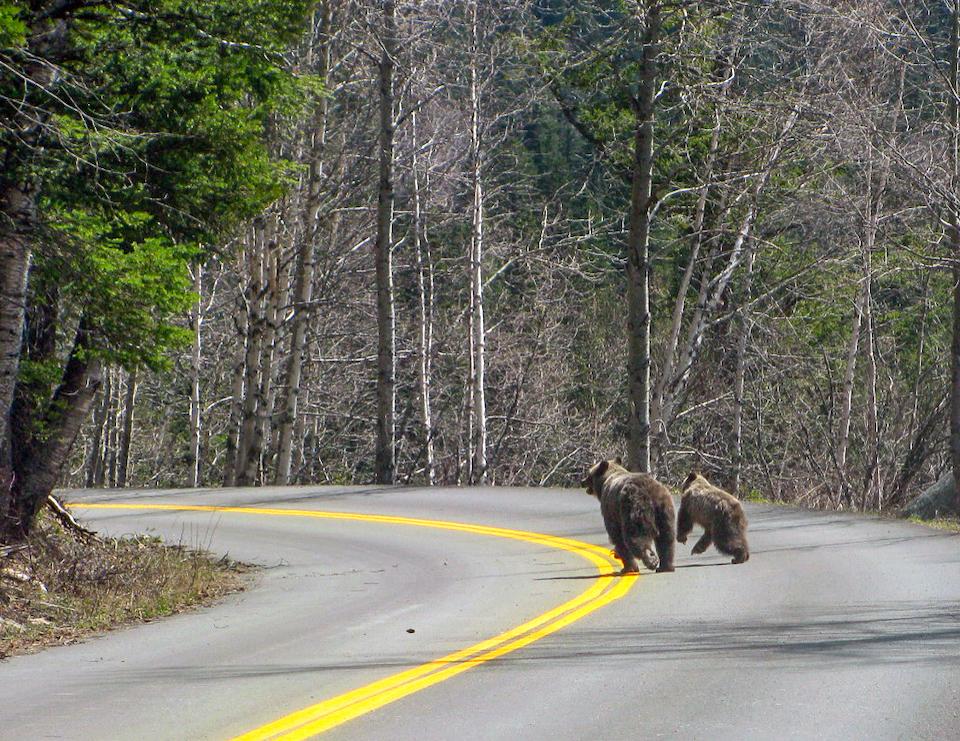
A sun bear in Khao Yai National Park/Thailand Department of National Parks, Wildlife and Plant Conservation
In Thailand, officials want to close their national parks every year for two months or so to give wildlife a break from humans. Would that fly in the United States? While it might make sense for a variety of reasons, would the National Park Service, the politicians, the gateway towns, and park travelers agree to such a move?
Accompanying a news report of the Thai proposal by Varawut Silpa-archa, the country's minister of National Resources and Environment, was a photo of a sun bear, a usually reclusive animal, crossing a road in Khao Yai National Park.
"The absence of tourists leads to wildlife recovery," Thanya Netithammakun, director-general of Thailand's Department of National Parks, Wildlife and Plant Conservation, told the Bangkok Post.
Would such a closure be good for wildlife in the U.S. National Park System? There have in recent weeks been reports about wildlife in parks such as Yosemite and Death Valley being spotted in places usually filled with visitors. But Park Service officials in Washington say the behavior really isn't unusual.
"The NPS Office of Communications has been in consistent contact with the natural resources staff in Fort Collins (Colorado) and with parks including Yellowstone, Joshua Tree, Rocky Mountain, Acadia, Great Smoky Mountains, Everglades, and Death Valley over the last couple of months regarding this topic," Park Service spokesperson Kathy Kupper told Traveler last week.
"And the basic answer we receive is what you read -- that really, the only noted difference is that some wildlife have used open roads to travel and some have been seen foraging for food in areas they generally shy away from when people are present. An example is from Joshua Tree National Park where desert tortoise were seen crossing roads from which they usually stay away. Coyote and fox also left 'their mark' on the once busy park roads."
While pronghorn antelope at Death Valley have been seen at lower elevations than normal, that can't be tied to the coronavirus pandemic because those sightings began two years ago, said Kupper.
Still, research has shown that wildlife generally avoid humans, and will return to areas once humans have left. A 2013 study at Yellowstone National Park found that "human occupancy of (backcountry) campsites can displace (grizzly) bears from habitats up to 400 meters away and that campsite closures may enhance foraging opportunities for grizzly bears."
Anecdotal evidence has backed this up, as the situation at Yosemite has demonstrated and from photos taken by road crews in Glacier National Park earlier this month.

Grizzly bears spotted by road crews crossing the road in Glacier National Park/NPS
Should anyone be surprised that wild animals will return to areas they were driven out of by humans, once those humans are gone?
Along with allowing such wildlife movements through annual closures of parks for a month or two, closures could allow entire landscapes to "rest" a bit without humans. Give campgrounds an extra eight weeks to recover even just a little bit from being pounded down by campers. Ditto with some trails where crowds of hikers have widened the intended footprint of a path. Keep park maintenance staff employed and allow them to catch up on their park's backlog without visitors.
Plus, perhaps some wildlife would begin to regain a little bit of its fear of human visitors and the wouldn't be as many human-wildlife conflicts once the humans were let back into parks.
That's simply said, but such closures in the United States very likely wouldn't be quickly embraced.
"I am pretty sure that the U.S. visitors and businesses would not be in favor of closing parks for two months unless the NPS employs an effective education program and even then, it would be a long process before this type of proposal would likely be accepted," said Phil Francis, chair of the Coalition to Protect America's National Parks. "I think it's an idea worth considering and if it's implemented in Thailand, then the NPS should learn from it to determine its effectiveness."



Comments
There may be a silver lining to COVID-19 afterall. In response to the virus, it appears that several parks are proposing ways to limit access as they go through phased reopenings. I take it that these are intended to be temporary measures. But, we may find that they should become permanent.
It does seem that the American idea of annual vacation melds school holidays for the children with the long established policy of workers paid vacation time off, all compressed into the time between Memorial Day Holiday and Labor Day Holiday. Each season enlivens families to GO on vacation! Many, many do stampede to and overrun the Public National Parks, State Parks and and other wild areas. We have come to expect a miracle of rejuvenation to the wilderness, the remainder of the year. Is that a practical policy?
This is only one man's observation, which means little, however I do agree that seasonal overuse is as harmful as over pollution. Our wildlife botanists must lead the way. For the love of god let them lead.